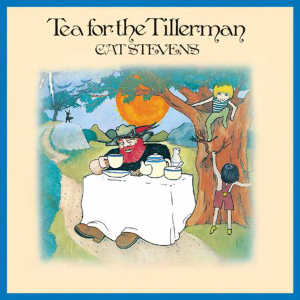Cat Stevens • Tea for the Tillerman
Analogue Productions/Island Records APP 9135
33-RPM 200g LP
1970/2011

It’s not every day that a new record pressing plant opens, especially one that specifically caters to the needs of vinyl-loving audiophiles. So when word got out that Acoustic Sounds’ head honcho, Chad Kassem, was starting a new venture called Quality Record Pressings (QRP) doing just that, vinyl lovers started salivating at the thought of the records that would be pressed there. Kassem was determined that Cat Stevens’ Tea for the Tillerman would be QRP’s first release, so the hunt was on to find a copy of the original analogue master tapes.
They were finally found and sent to Sterling Sound to cut the masters. Sterling Sound is where the original British Island Records and US A&M Records records were cut by Lee Hulko, and amazingly, Hulko’s original mastering notes were located. George Marino, Sterling’s Senior Mastering Engineer, performed the mastering duties this time around, after which the masters were shipped to QRP’s new state of the art facility where they were plated and pressed by Gary Salstrom and Mark Huggett respectively.
For this first important release, even the packaging received the deluxe treatment: Analogue Productions decided to use a facsimile of the original Island Records gatefold jacket (complete with the glossy outside paper and textured inside paper), eschewing the non-gatefold US version. This attention to detail was even applied to the record label, where the original pink Island label was used. Readers interested in more details of this important release’s story should check out this video published by QRP on YouTube, which contains some fascinating behind-the-scenes footage.
All this effort would have been for nothing if the sound quality of the finished product wasn’t up to snuff. From the very first few seconds of the opening track on side one, Where do the Children Play?, it was clear to me that QRP have done a fantastic job of this release, one of which they can be proud. The sound quality is much better than my early (but not, I think, original) Island pressing. Not only is the bass more deep and full, the treble is more airy and extended. And the detail! Little details, like the sound of the plectrum hitting the guitar’s nylon strings just before you hear the sound of the string itself, are present in abundance. There’re certainly more low level details on this version than on my Island version.
The sound can get perhaps a touch strident on the loudest passages, but these are very few and far between and I think the better option (the other being to lower overall levels, potentially masking some of the dynamics and low level details that make this record so wonderful). Talking of dynamics, one thing occurred to me while I was listening to Tea for the Tillerman: it was mastered at 33 RPM, rather than 45 RPM. When I asked Chad Kassem about a 45 RPM version, he didn’t rule out the possibility, but stated that any 45-RPM release would “probably be a few years away”.
The record is flat and its surfaces dead quiet; with its very high sound quality, great music, and impeccable packaging, Tea for the Tillerman—QRP’s first title—is a must-have, and earns my highest recommendation!